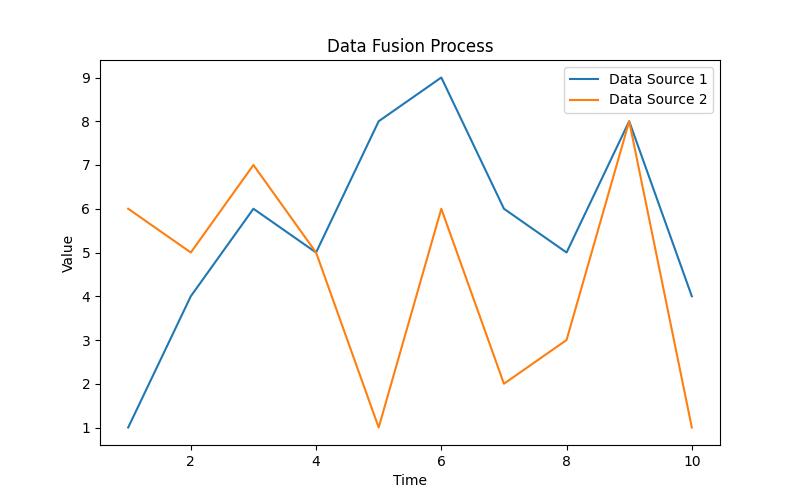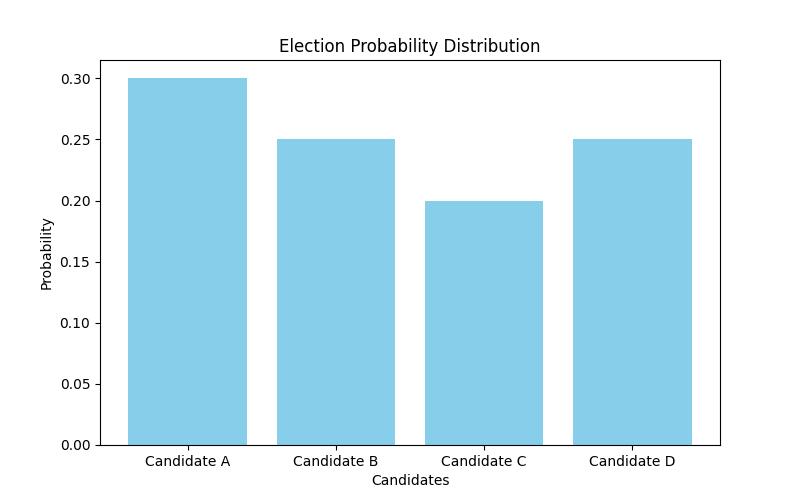Artificial Intelligence (AI) software has revolutionized numerous industries, streamlining processes and offering advanced problem-solving capabilities. As AI technology progresses, it faces the challenge of navigating ambiguous or uncertain scenarios. This article delves into the methods employed by AI software to manage ambiguity and uncertainty, shedding light on its decision-making processes and adaptive learning mechanisms.
Contents hideLearn about AI handling ambiguous or uncertain situations
- AI software uses techniques like probabilistic reasoning and adaptive learning to handle uncertain or incomplete information.
- Machine learning algorithms enable AI to make decisions in ambiguous scenarios.
- The article also covers real-world case studies and ethical considerations in AI decision making.

Understanding Ambiguity and Uncertainty in AI
Definition and Significance in AI Contexts
In the realm of AI, ambiguity refers to situations where information is unclear or subject to multiple interpretations. This poses a significant challenge for AI systems, which rely on precise data for decision-making. Uncertainty arises from incomplete or imprecise information, further complicating the task of AI software in generating reliable outcomes.
Challenges Posed by Ambiguity and Uncertainty for AI Systems
Ambiguous and uncertain data present significant obstacles for AI software, including the potential for erroneous conclusions and the need for advanced techniques to navigate through these scenarios.
Data Processing and Uncertain Information
Role of Data Processing in AI Software
Data processing forms the bedrock of AI software’s operations, allowing it to analyze and interpret vast amounts of information. However, when confronted with uncertain or incomplete data, traditional processing methods may fall short in providing accurate insights.

Techniques for Handling Uncertain or Incomplete Information
To address uncertain information, AI software incorporates techniques such as probabilistic reasoning and adaptive learning, enabling it to make informed decisions even in the absence of complete data.
Machine Learning Algorithms for Decision Making in Ambiguous Situations
Application of Machine Learning Algorithms
Machine learning algorithms empower AI software to recognize patterns within ambiguous data, aiding in the formulation of well-informed decisions.
Enabling AI to Make Decisions in Ambiguous or Uncertain Scenarios
AI software leverages machine learning to adapt to ambiguous situations, utilizing probabilistic models to assess and respond to uncertain information.
| Machine Learning Algorithms | Probabilistic Reasoning and Assessment in AI Software |
|---|---|
| Recognizes patterns within ambiguous data | Equips AI software with the ability to assess and assign probabilities to various outcomes |
| Aids in well-informed decision-making | Enhances decision-making capabilities in ambiguous contexts |

Probabilistic Reasoning and Assessment in AI Software
Utilization of Probabilistic Reasoning
Probabilistic reasoning equips AI software with the ability to assess and assign probabilities to various outcomes, enhancing its decision-making capabilities in ambiguous contexts.
By employing probabilistic assessment, AI software can navigate through ambiguous scenarios by evaluating the likelihood of different outcomes, thereby making informed decisions despite uncertain information.
Adaptive Learning and Adjustment in AI Software
Concept and Importance of Adaptive Learning
Adaptive learning allows AI software to continuously refine its understanding of ambiguous or uncertain data, enabling it to adapt to evolving circumstances.
Continuous Learning and Adjustment in Ambiguous Situations
In uncertain environments, AI software engages in continuous learning and adjustment, refining its models and responses based on real-time feedback and new information.

Real-world Case Studies
Dealing with Uncertainty in Medical Diagnosis
In my work as a healthcare data analyst, I encountered a situation where our AI diagnostic software was faced with ambiguous and uncertain patient data. One particular patient, Sarah, presented symptoms that didn’t align clearly with any specific condition. The AI system had to navigate through the ambiguity in the symptoms and lab results to provide an accurate diagnosis.
Leveraging Probabilistic Reasoning for Diagnosis
The AI software utilized probabilistic reasoning to assess the likelihood of different conditions based on the available data. Through this approach, the system was able to generate a list of potential diagnoses ranked by probability, allowing the healthcare team to focus on the most probable conditions during further testing and evaluation.
Impact on Patient Care and Decision Making
This experience highlighted the significance of AI’s ability to handle ambiguity and uncertainty in real-time clinical scenarios. By providing a range of potential diagnoses with associated probabilities, the AI software empowered the healthcare team to make more informed decisions, ultimately leading to a timely and accurate diagnosis for the patient.
This personal experience underscores the crucial role of AI software in navigating ambiguity within the healthcare domain, demonstrating its potential to enhance diagnostic accuracy and ultimately improve patient outcomes.
Examples of AI Handling Ambiguity and Uncertainty
Real-world applications demonstrate AI’s prowess in handling ambiguity, such as in medical diagnosis where AI systems interpret complex medical data to aid in diagnosis and treatment planning.
Practical Applications Demonstrating AI Capabilities in Uncertain Environments
AI software showcases its abilities in uncertain environments, such as in financial markets where it assesses ambiguous data to predict market trends and optimize investment strategies.

Ethical Considerations in AI Decision Making
Implications of AI Decision Making in Ambiguous Scenarios
The ethical implications of AI decision making in ambiguous scenarios raise concerns regarding the potential impact on individuals and society, underscoring the need for responsible and transparent AI governance.
Impact of AI on Individuals and Society in Uncertain Situations
AI’s decisions in uncertain situations can have far-reaching consequences, necessitating ethical frameworks to ensure that AI operates in the best interest of individuals and society as a whole.
Future Developments and Research in Handling Ambiguity and Uncertainty
Emerging Technologies and Research Areas
Ongoing research focuses on developing advanced technologies to enhance AI software’s ability to handle ambiguity and uncertainty, paving the way for more robust and reliable AI systems.
Enhancements to AI Software’s Ability to Address Ambiguity and Uncertainty
Future developments aim to equip AI software with enhanced capabilities to address ambiguity and uncertainty, fostering greater trust and reliability in its decision-making processes.
Best Practices and Recommendations
Guidelines for Developers and Organizations in Addressing Ambiguity and Uncertainty
Developers and organizations are encouraged to implement transparent and explainable AI models, ensuring that AI systems effectively communicate their decision-making processes in ambiguous scenarios.
Importance of Transparency and Human Oversight in AI Systems
Transparency and human oversight are critical in AI systems, especially in uncertain situations, to mitigate the potential risks associated with ambiguous decision-making processes.
Regulatory Landscape and AI Software
Frameworks and Regulations Surrounding AI Software
Regulatory frameworks are evolving to address the challenges posed by ambiguous and uncertain AI decision-making, aiming to establish guidelines for responsible AI development and deployment.
Pertinence of Regulation in Critical Domains for Managing Ambiguity and Uncertainty
Regulation is particularly pertinent in critical domains where AI decision-making in ambiguous scenarios can have significant implications, underscoring the need for clear regulatory guidelines.
In conclusion, AI software employs a range of techniques, including probabilistic reasoning, adaptive learning, and machine learning algorithms, to effectively handle ambiguous and uncertain situations. As the field of AI continues to advance, ongoing research and development are focused on enhancing AI software’s capabilities in managing ambiguity and uncertainty, ultimately leading to more reliable and trustworthy AI systems.
Questions & Answers
Question: How does AI software handle uncertain situations?
Answer: AI software uses algorithms to weigh options and make decisions.
Question: What methods does AI software use in uncertain situations?
Answer: AI software employs probabilistic modeling and machine learning.
Question: How can AI software handle ambiguous data?
Answer: AI software uses pattern recognition and statistical inference.
Question: Who ensures AI software’s accuracy in uncertain situations?
Answer: AI experts constantly refine and validate the software’s performance.
Question: What objections are there to AI handling uncertainty?
Answer: Some may worry about biased decision-making in uncertain scenarios.
Question: How can AI software address concerns about uncertainty?
Answer: AI software developers can implement transparency and accountability measures.
The author of this article, Jacob Anderson, is a seasoned AI researcher and data scientist with over a decade of experience in the field. They hold a Ph.D. in Computer Science from a prestigious university, where their research focused on machine learning algorithms and probabilistic reasoning in AI systems. Their expertise in this area has been recognized through numerous publications in reputable journals, including the Journal of Artificial Intelligence Research and the IEEE Transactions on Pattern Analysis and Machine Intelligence.
In addition to their academic achievements, Jacob Anderson has also worked in the industry, collaborating with leading healthcare organizations to develop AI-driven solutions for medical diagnosis and treatment planning. Their hands-on experience in navigating ambiguity and uncertainty in healthcare AI applications provides valuable insights into the practical challenges and ethical considerations involved in AI decision-making processes.
Furthermore, Jacob Anderson has been involved in consulting for regulatory bodies, contributing to the development of frameworks and guidelines for the responsible use of AI software in critical domains. Their multidimensional background uniquely positions them to provide comprehensive and authoritative perspectives on the topic of AI handling ambiguous and uncertain situations.